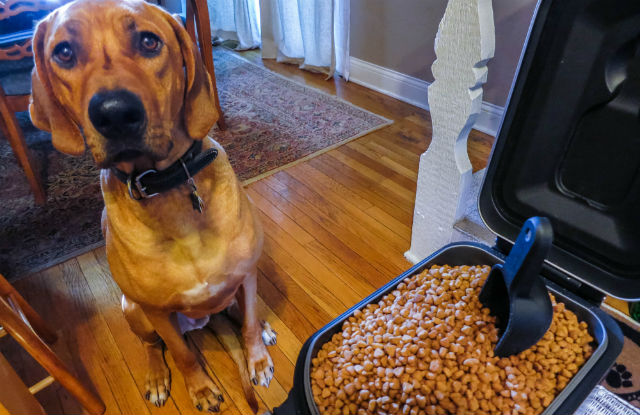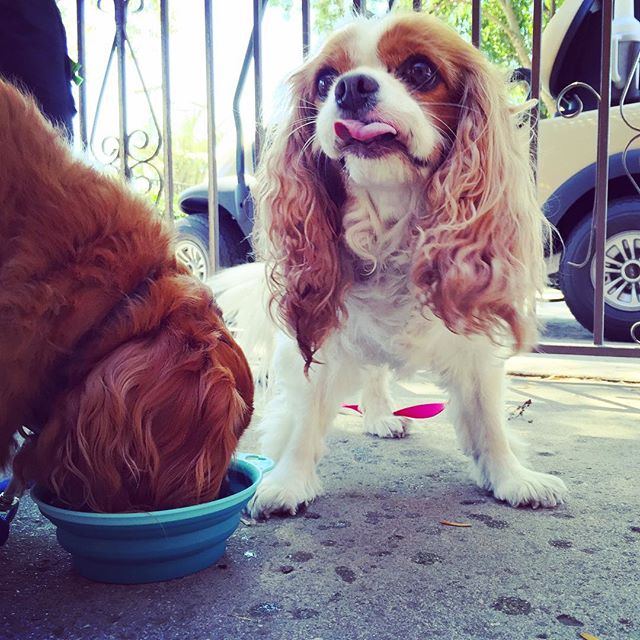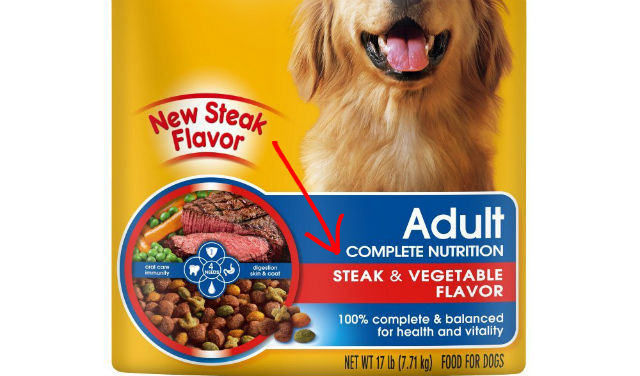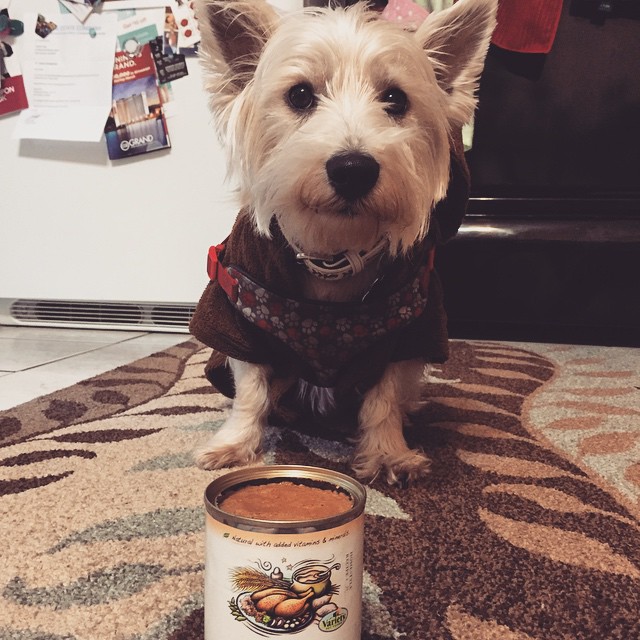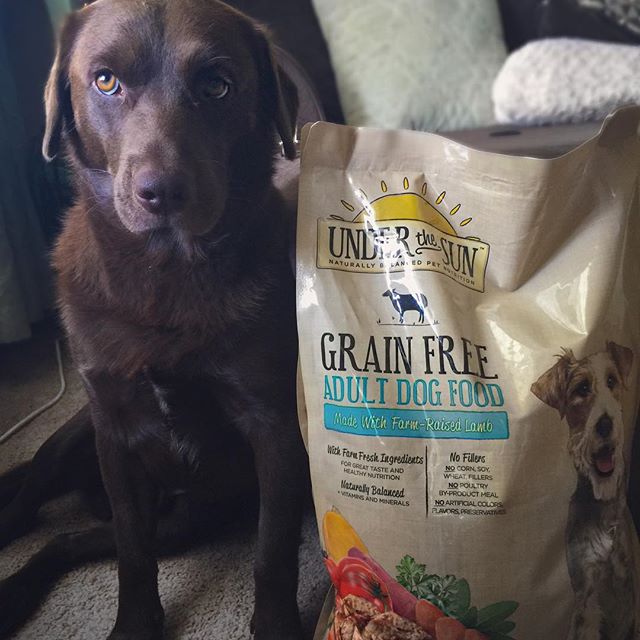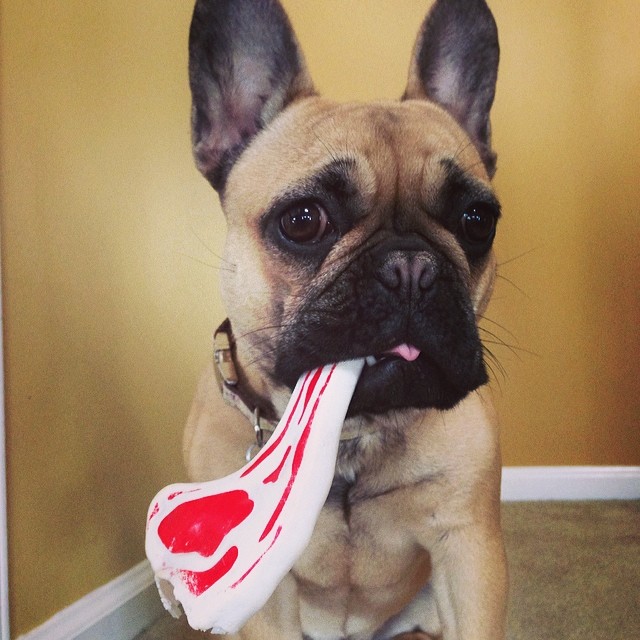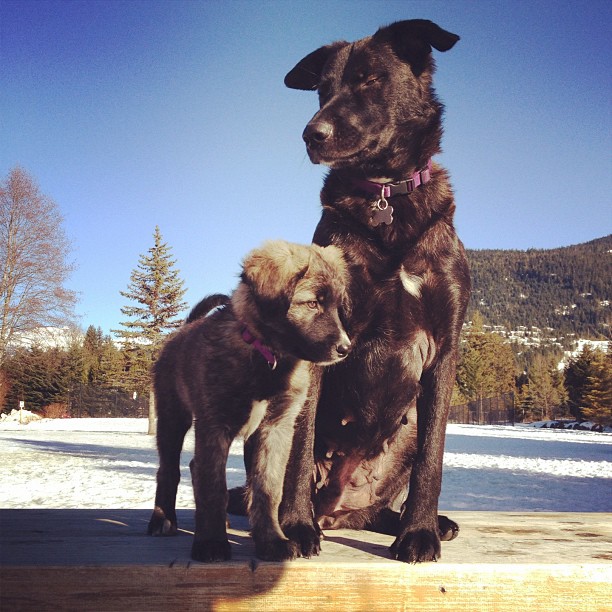If you’re anything like me (i.e., a really crazy dog lady) you might have endless hours, days, or months under your belt spent searching for the “perfect” dog food. It seems impossible—trying to find a quality food that is genuinely good to put in your dog’s stomach and remains in your budget is often the point where pet parents start to get frustrated.
Believe me, I know the struggle. A good dog food should cause no upsets in the digestive system, give your pup plenty of energy, keep his coat shiny and smooth, and his eyes bright and clear. This is no small feat, of course, but these steps just might give you a better handle on a complicated task.
Step 1: Consider your dog’s age, activity, breed, and reproductive status.
Your dog’s physical characteristics, behavior, and overall health are enormously important when choosing an appropriate dog food. Puppies and lactating mothers require more calories per day, while senior pets require fewer. Similarly, highly active breeds require more calories than couch potato breeds—the type and amount of food fed correctly will help your dog avoid health issues as a result of obesity.
Some brands formulate foods based on breed, but most will only distinguish between small breed formulas versus large breed formulas. The differences mainly regard kibble size, but it’s important that your dog be able to eat comfortably and safely.
Step 2: Know the “buzz words” on food packaging.
Would you believe the actual wording on the package is a sort of code for HOW MUCH of any one protein is found in the food? According to the FDA analysis of pet food labels, simple names like “Beef for Dogs,” or “Chicken Dog Food” indicate that the listed protein comprises 95% of the total product, not including the water content. With water added, the results come to a required 70%.
The key word “dinner” is another strong indicator; foods with labels like “Chicken Stew Dinner” and “Salmon Dinner for Dogs” only contain 25% of the protein. The same rule applies to terms like “platter,” “entree,” “nuggets,” and “formula.” If there are several ingredients on the label, both of them combined must reach 25% of the total product.
If, you see the phrase “with cheese,” “with salmon,” or “with” anything, the food is only required to contain 3% of that ingredient. For example, if a dry dog food label reads “Chicken Dinner for Dogs” and adds “with cheese,” it contains 25% chicken and 3% cheese.
Last and definitely least, if the food claims that it is “beef flavor” or “chicken flavor” there need only be trace amounts of beef or chicken—just enough for a dog to detect the taste.
Step 3: Learn to read the ingredients.
Keep in mind that the label lists ingredients based on weight, and meats or meat meals take the first spot because they contain a high water content. Choose a food with a meat or meat meal as the first ingredient. Dogs are omnivores, and only under extreme circumstances (such as very bad allergies) should they be fed a vegetarian diet.
“Meat” can include skeletal muscle of an animal as well as tissue from the heart, diaphragm, and esophagus, among other things. It may also include fat and gristle just as meat destined for human consumption might. “Meat by-product,” on the other hand, is the non-rendered parts of an animal sans meat, and can include the lungs, kidneys, brain, blood, bone, and more. By-product tested by the strict AAFCO (Association of American Feed Control Officials) standards should NOT include hair, horns, teeth, or hooves. “Meat meal” describes any product rendered from animal tissues.
On your search, also ensure that the first ingredient is not a grain, tuber, or vegetable, such as ground corn. Just because corn (when ground) is digestible, does not mean it has high nutritional value. Corn has low protein and unimpressive vitamin and mineral content, and the only reason manufacturers boast about this carbohydrate is because it’s inexpensive. By no means is corn “bad” for dogs, just don’t fall for advertising that advocates its nutritional benefits.
Step 4: Decide if grain-free is right for your dog.
If you think you need to switch to a grain-free diet because you suspect Fido has a food allergy, visiting your vet is a really good idea. Grains are not bad for dogs unless they have a severe allergy, and oftentimes you can avoid the higher price tags that accompany these formulas.
Don’t know if your dog has a food allergy or intolerance? Excessive licking of the paws, scratching, vomiting, or diarrhea can be signs, and a vet will help you find the answer. Even with a confirmed allergy it is often the food’s main protein (like chicken or beef) that causes it, and not the grains. Before buying into the hype–this includes gluten-free dog foods, too–consider the needs of your dog as an individual.
Step 5: Check the nutritional adequacy statement.
Usually located with the rest of the nutritional information on a bag or can, the adequacy statement might say, “provides complete and balanced nutrition for maintenance of adult dogs,” or for “all life stages,” or “puppies.” You get the idea. Always look for the AAFCO statement on the back; membership is voluntary by companies, but AAFCO’s high standards ensure that the nutritional value is there.
Step 6: Do your homework on your brand of choice.
After all that nit-picking, you’ve finally chosen a brand of food you think your dog will love. Now it’s equally important that you do some research on the manufacturer to ensure quality control and appropriate sourcing of ingredients. It is not required that these things be listed on the label, so it’s up to you to give yourself some peace of mind.
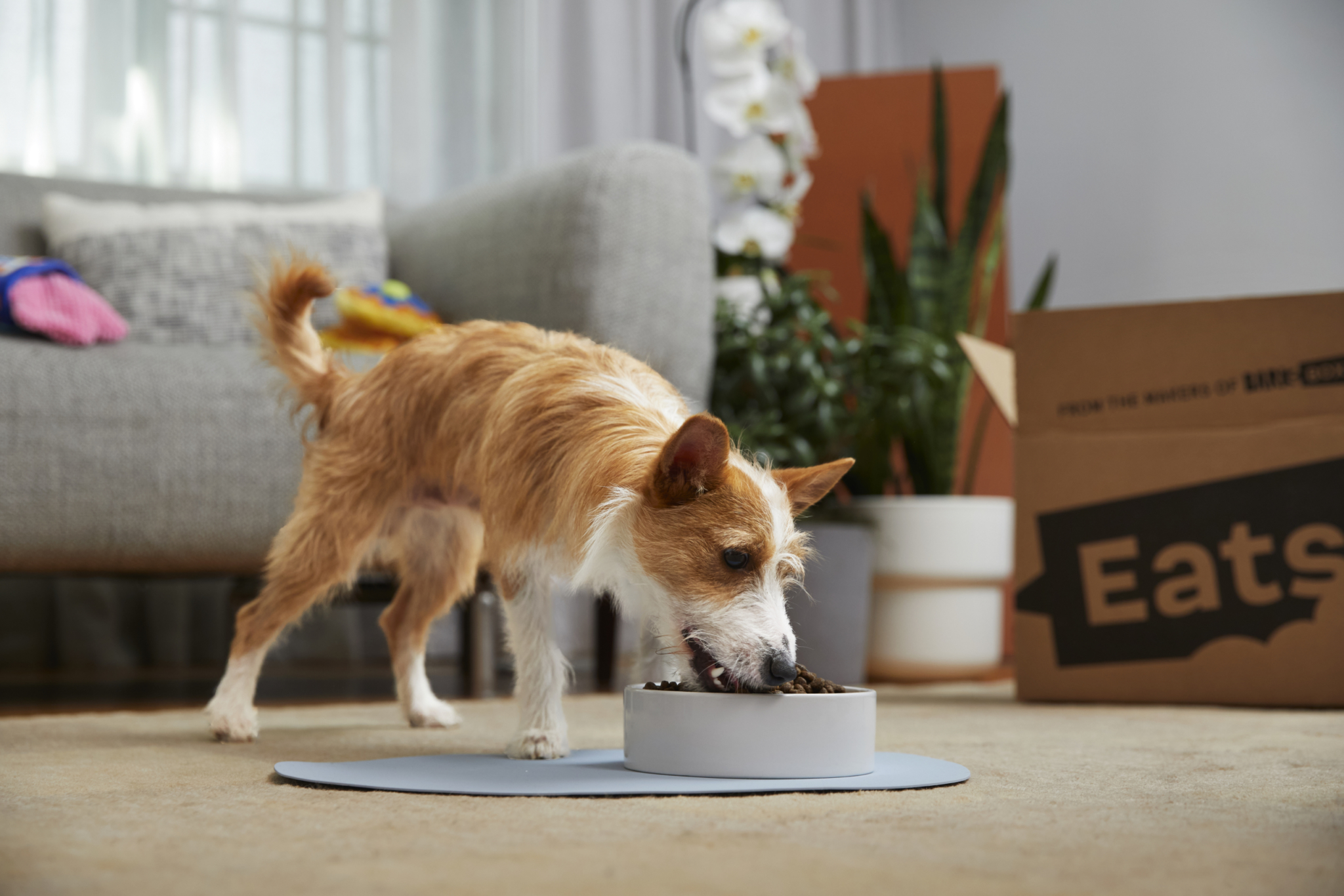

If you have any questions not answered by the packaging, definitely contact a representative. For example, BARK Eats has plenty of Dog Food Experts (and a certified nutritionist) on hand to help you choose the perfect formula for your dog’s food. If the company produces a quality product they will be eager to help.
Click here to see some of our favorite dog foods.

